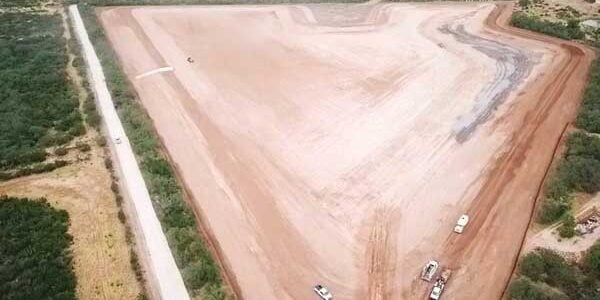When looking for a large pond liner the traditional options are RPE and EPDM (rubber/plastic liners). But there is a non-traditional option, Sodium Bentonite Pond Liner.
What is the difference? Why should I consider using bentonite?
Which is better? Will it work on my pond soil?
Let’s try to get some answers.
Large Pond Liner Types
Rubber liners and bentonite are not the same type of large pond liners. The first ones are passive liners, but bentonite is an active liner. Putting that in simple English: rubber liners hold water right away. Bentonite requires contact with water to expand and transform into a thick gel that seals the soil.
Which type of liner is better? Both will hold water and can be installed on large ponds. The difference is that Bentonite can self-heal and expand around the small gaps and crevices in the soil, meaning that you don’t need to worry if the machinery runs over the liner or plants and roots pierce the pond bottom. Bentonite will rearrange itself to seal the holes.
The Large Pond Liner Installation Process
The basic principle of installing a large pond rubber liner is, in theory, simple. Unroll the liner, bond the edges (if you don’t buy a custom-size liner), dig a pocket on the pond perimeter to secure the liner edge, seal the punctures, and cover it with soil.
The bentonite liner installation steps are: spread evenly, sprinkle with water, mix and compress it with the pond soil.
In both cases:
Machinery is required to unload the liner and prepare the land for the large pond liner.
A professional should recommend the right size (or amount) of liner material.
The installation can be tricky. For the rubber liner, making sure no air pockets are left, extending the material thoroughly throughout the area and correctly hiding the edges from the elements are quite crucial. For bentonite, the distribution process must be as even as possible, otherwise you risk leaving areas with no bentonite coverage that can start leaking at a later time.
However:
Bentonite can be installed by a very small team, even a single person. A rubber liner installation requires a full team to unroll, extend and adjust the liner.
Bentonite has very little to no risk of punctures or tears and can stand the natural elements like the sun and heavy wildlife around the pond or lake.
Which means that if you have the tools, time, and a bit of professional advice, you can even install bentonite by yourself.
So…? Half a point for the Bentonite liner?
Large Pond Liner Cost.
The investment for the material is pretty similar. For a 1 acre pond, the custom size liner will cost around 34k. Bentonite will cost between 20 and 35k depending on your pond soil. Keep in mind that soils with more rock and less clay will need more bentonite per square feet to ensure the sealing.
The cost difference will fall in the shipping cost and the installation cost. After adding all the services and making all the calculations, you will end with a very similar investment.
Then we award one point for both liners.
Effectiveness and durability.
The nature of the rubber liner makes it the most effective, however, some external agent can pierce the liner, either wildlife or tree roots. Sunlight also degrades the liner material, so basically a lot of the natural elements make the liner susceptible to damage.
Bentonite can also be very effective, but the installation process and the amount of product are key for its effectiveness.
Both are effective, so we award one point for each liner.
Now, if we talk about durability, the point goes to bentonite, because it doesn’t require maintenance, it self-repairs from small punctures and will last as long you don’t pump out the water and let the surface dry.
Summarizing.
Traditional rubber or EPDM liner: 2 points
Sodium Bentonite liner: 3.5 points
Then which one is the winner?
Looking at the numbers, bentonite is the winner but the fact is…
If you get a professional to install the large pond liner, whatever kind of liner will work and hold water. The biggest advantage for bentonite is to give you fewer problems in the long run.
You can find more information about Bentonite Pond Liner here.
If you requiere a professioal intalling a large pond liner contact us
Our team is ready to help you to get the best option for your pond.







